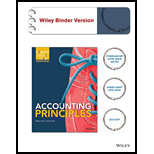
(a)
T- account: It is the account or graphical demonstration of general ledger account or its entries. The left side of T-account and the right side represents as debit and credit side respectively. The journal entries recorded and posted to T-accounts. In the T-account of assets, the journal entries which raise the balance of asset are debited in the T-account.
Rules of debit and credit: All the items mentioned in the income statement and balance sheet are presented by journalizing the accounts, then classifying them into ledgers and afterward resulted in the summarized income statement and balance sheet.
For journalizing the various accounts, rules of debit and credit has been followed according to the category of the account. There are five categories of accounts:
Assets:It can be explained as the resources which are owned and controlled by the organization and which are capable of providing some benefits in future for working the core business of the organization. Whenever any asset has been purchased or any transaction which raises the amount of asset, the asset account will be debited.
Liabilities: These are referred as Company’s financial commitment arising during the course of Business Cycle, which will be complete by the outflow of Resources. Whenever any transaction increases the amount of liability, the liability account will be credited.
Revenues: It is income that an entity earns from its normal business operations. It reflects the amount which is received by the firm by manufacturing or providing goods and services. Whenever income has been earned or due, the revenue account will be credited.
Expenses: These are the gross outflows incurred by a business entity while carrying out their regular business operations like manufacturing and providing goods and services. Whenever any expense has been due to be incurred, the expense account has been debited.
Capital account: This account represents the balance of amount invested by the stockholders. It also includes the earnings which are due and not withdrawn by the stockholders. Whenever any transaction increases the amount of capital, the capital account will be credited.
To journalize and prepare: The transactions occurred during the period of January of the current year for Company C.
(b)
To journalize and prepare: The adjustments required at the end of the period of January of the current year for Company C.
(c)
The T-accounts prepared are to be finalized in order to compute the ending balance.
Want to see the full answer?
Check out a sample textbook solution
Chapter 3 Solutions
Accounting Principles 12E WileyPLUS with Loose-Leaf Print Companion with WileyPLUS Leanring Space Card Set
- general accounting questionarrow_forwardOn January 1, 2015, Paul Corp. paid $1,800,000 for 45,000 shares of Melrose Inc.'s voting common stock, representing a 30% ownership. No allocation to goodwill or other specific account was made. Significant influence over Melrose was achieved by this acquisition. During 2015, Melrose reported net income of $600,000 and declared a dividend of $2.50 per share. What was the balance in the Investment in Melrose Inc. account found in the financial records of Paul as of December 31, 2015? Helarrow_forwardPlease provide correct solution and general accounting questionarrow_forward
- Net income?arrow_forwardAccurate Answerarrow_forwardA project will increase sales by $250,000 and cash expenses by $60,000. The project will cost $400,000 and be depreciated using the straight-line method to a zero book value over the 4-year life of the project. The company has a marginal tax rate of 35%. What is the yearly value of the depreciation tax shield?arrow_forward

 AccountingAccountingISBN:9781337272094Author:WARREN, Carl S., Reeve, James M., Duchac, Jonathan E.Publisher:Cengage Learning,
AccountingAccountingISBN:9781337272094Author:WARREN, Carl S., Reeve, James M., Duchac, Jonathan E.Publisher:Cengage Learning, Accounting Information SystemsAccountingISBN:9781337619202Author:Hall, James A.Publisher:Cengage Learning,
Accounting Information SystemsAccountingISBN:9781337619202Author:Hall, James A.Publisher:Cengage Learning, Horngren's Cost Accounting: A Managerial Emphasis...AccountingISBN:9780134475585Author:Srikant M. Datar, Madhav V. RajanPublisher:PEARSON
Horngren's Cost Accounting: A Managerial Emphasis...AccountingISBN:9780134475585Author:Srikant M. Datar, Madhav V. RajanPublisher:PEARSON Intermediate AccountingAccountingISBN:9781259722660Author:J. David Spiceland, Mark W. Nelson, Wayne M ThomasPublisher:McGraw-Hill Education
Intermediate AccountingAccountingISBN:9781259722660Author:J. David Spiceland, Mark W. Nelson, Wayne M ThomasPublisher:McGraw-Hill Education Financial and Managerial AccountingAccountingISBN:9781259726705Author:John J Wild, Ken W. Shaw, Barbara Chiappetta Fundamental Accounting PrinciplesPublisher:McGraw-Hill Education
Financial and Managerial AccountingAccountingISBN:9781259726705Author:John J Wild, Ken W. Shaw, Barbara Chiappetta Fundamental Accounting PrinciplesPublisher:McGraw-Hill Education





